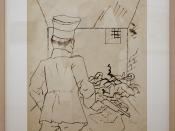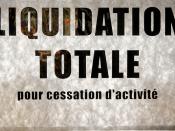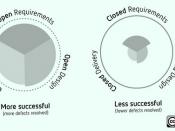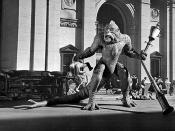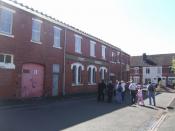Background In autumn, 1985, Will-Burt, a manufacturer of fabrication, machine parts and telescoping masts, was on the threshold of liquidation. The problems began when it lost a $6 million product liability lawsuit.
The lawsuit started when a structure containing the parts they manufactured collapsed in Miami in 1980, killing one and injuring another. During the legal proceedings, Will-Burt's CEO died of a heart attack, Harry Featherstone, the company's vice president since 1978, took over as new CEO. Having lost the proceedings, their insurer paid the amount but refused to renew their coverage a year letter.
With two more liability suits, one from Texas and the other from San Diego, and having no insurance coverage, the owners decided to sell or liquidate the company to avoid losing everything. And why not? Aside from the liability suits, the company was facing numerous problems related to poor product quality and low employee morale.
Faced with tough obstacles, Featherstone must prepare a business plan before December 30, 1985 to convince the owners not to liquidate the company. Then he must prepare a long term solution to improve product quality and employee morale.
Statement of the Problem Obviously, the company is in the verge of liquidation. Being in bad financial shape, it very vulnerable to liability suits.
Even though the company has $20 million in sales, profitability is only 1% to 5% over the past few years. This company never even made $1 million a year. A company of this state, and having no more insurance coverage, cannot withstand another loss from two pending liability suits. This caused the owners to consider liquidating the company.
A closer look revealed that poor product quality attributed to the company's near liquidation state.
With regard to the liability suits, there is a reason to assume that the low quality of their manufactured parts might have contributed to the accidents that brought these to them.
With regard to their dismal profitability state, it has been found out that wasted reworking man hours attributed to this. Product quality was bad such that workers spent around 25,000 hours a year redoing faulty parts. All that coming from a whopping 35% product rejection rate. Reworking expenses were very high such that they only made very little in spite of $20 million in sales.
An even deeper look revealed the root of the problem: Lack of employee motivation and empowerment.
Our investigative research revealed the poor product quality was caused by lack of education among the workers. They lack the necessary technical knowledge, skills and expertise to make quality products. The average education level of the employees was around 10th grade. Many of them were high school dropouts. Some of them couldn't even read. Essential skills like math needed to read blue prints used in production was nowhere in sight.
People who lack knowledge needed to be closely supervised, denying them the power to make their own decisions. So aside from having high production error rate, they suffered from low morale. Daily Absenteeism went as high as 8% and employee turnover was at 30-40%. The company's poor compensation arising from its current state didn't help either. It's wage rate was $2 below average and it's pension plan was bad that a 35 year employee can retire with only $80 - $120 a month which was below 1985's standards.
Figures showing the company's state.
Sales $20M Profitability 1-5% Employee Turnover 30-40% Manufacturing Efficiency 65% Hours of product rework per month 2,000 Product Rejection Rate 35% Daily absenteeism 8%
